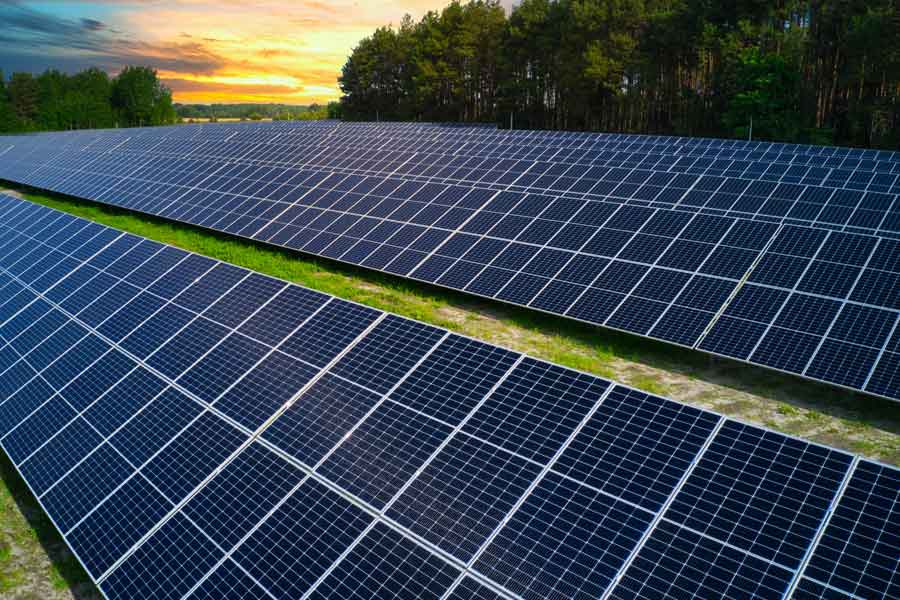In a high-profile executive order, California Governor Gavin Newsom recently announced his intention to allow car dealers within the state to sell only zero emissions vehicles by 2035. While appearing extreme to some, the order is in step with the state’s overall efforts to increase the production of renewable energy.
California is a leader in the renewable energy market as the largest producer of solar energy in the United States. Roughly 20% of California’s electricity comes from solar sources, a number that grows every year thanks to ambitious laws, including the 2018 SB 100 mandate, which requires the state to switch to fully renewable energy sources by 2030.
Multinational energy companies like BP are taking note. The London-based oil-and-gas company is in the process of pivoting its global strategy, seeking to become a “renewable energy powerhouse” and increasing its production of renewable infrastructure.
Facing both a rising public awareness of the urgency of climate change and the realities of global oil depletion, companies like BP that traditionally invested heavily in the construction of refineries and other oil production resources are pivoting to build in the increasingly profitable solar energy space, as represented by ambitious new construction efforts like the Wildflower Project.
“The far-reaching benefits of renewable energy, and solar in particular, for human health, the environment and the economy could not be overstated,” said Alyssa Edwards, BP’s vice president of Environmental Affairs and Government Relations. “Solar is a critical part of the solution in combating climate change by adding carbon free source into our energy mix.”
While multiple renewable energy sources are gaining more funding, including offshore wind energy and the creation of microgrids, solar remains popular due to its ease of construction and relatively low cost.
“Solar is now one of the most economical sources of new build energy generation,” Edwards said. “Utility scale solar prices now range from $16 MWh to $35 MWh—making it competitive with all other forms of generation. This pricing has allowed solar to increase its share of the total U.S. electrical generation from 0.1% in 2010 to nearly 3% in 2020.”
Building a solar future
The inspiration for pollinator-friendly solar farm construction came from a desire to create a mode of energy production that not only reduces humanity’s carbon output but actively supports a healthier, more biodiverse environment.
“Solar’s core contribution to global sustainability is through clean and affordable electricity generation,” Edwards said. “But with targeted long-term land management plans, we believe that solar can also be developed in a truly sustainable manner that leaves a net biodiversity benefit to the environment.”
This concept was the inspiration behind Lightsource, one of Europe’s largest solar developers. Since BP invested in the company, acquiring a 50% stake as of 2019, it has expanded from five to 13 countries, including the U.S.
With the Wildflower Project, Lightsource begins its first foray in California. “We signed a Power Purchase Agreement in 2018 with Sacramento Municipal Utilities Division, one of the largest publicly owned utility companies in the U.S.,” Edwards said. “We committed to finance, build and operate the 16.5 MW solar farm within SMUD’s service territory in Sacramento County, California.”
For Edwards, the construction of the Wildflower Project, located in Rio Linda, roughly 10 miles north of Sacramento, represents the role large oil companies can play in creating a more sustainably powered future. “I have always believed that the energy transition needs oil supermajors—their resources and infrastructure—to accelerate the low carbon transition,” she said.
Protecting pollinators
When constructing a new solar farm, Lightsource prioritizes creating a pollinator-friendly environment. “For a decade in the U.K., Lightsource BP has been building solar farms with pollinator habitats and bee keeping—we even have our own solar farm honey,” Edwards said. “We know that areas in and around solar facilities can be managed in a way that provides a benefit to the environment—whether it’s the establishment of pollinators, sheep grazing or other wildlife habitat creation.”
Edwards said that this work is an important part of taking a more holistic approach to energy production. “Considering that pollinators have experienced significant population declines due to loss of habitat and pesticide use, we believe that establishing and maintaining native ground cover that supports pollinator species is integral to the long-term land management of Wildflower and other U.S. projects where feasible as well,” she said.
‘The far-reaching benefits of renewable energy, and solar in particular, for human health, the environment and the economy could not be overstated. Solar is a critical part of the solution in combating climate change by adding carbon free source into our energy mix.’
Alyssa Edwards, BP’s vice president of Environmental Affairs and Government Relations
What does a pollinator-friendly solar farm look like?
It all depends on where it’s constructed. “Implementing the pollinator habitat will depend largely on the local and regional landscape as well as species native to an area,” Edwards said. “At Wildflower, we will need to prep the site in a manner that will prevent weeds from outcompeting planted pollinator materials.”
What’s more, the work of creating a pollinator-friendly zone can be surprisingly labor-intensive.
“Preparation includes initial grading, weed germination, killing those weeds that germinate, letting a second crop of weeds germinate, killing that second crop, and the seeding,” Edwards said. “The seeding will need to be done by hand, ideally, as opposed to hydroseeded or drill seeded. Some plant species, such as milkweed, are planted as container plants or rhizomes so, in many ways, it’s like planting a garden in your backyard but on a much bigger scale.”
As for what plants will be included, Edwards said the company is planning the initiative with an eye toward year-round usage.
“At Wildflower, both herbaceous perennial and annual plants will be installed in the pollinator garden, with groups of plants flowering at different times of the year to provide maximum pollinator benefits,” she said. “Different groups of similar plants will be installed together in ‘cells’ (all milkweed planted together, all spring-blooming annuals planted together, all summer-blooming perennials planted together) to facilitate targeted maintenance of each plant group as well as increase habitat values for pollinators.”
The rise of renewables
Beyond the Wildflower Project, Edwards said that building more renewable energy production facilities is a significant part of BP’s ongoing strategy for reducing carbon emissions company-wide.
“Climate change, affordable and clean energy, and biodiversity loss are among the complex and interwoven global issues that we face today,” she said. “These issues have serious consequences directly impacting both the environment and people’s lives and livelihoods. As a consequence, demand for renewable energy will only rapidly increase over time.”












